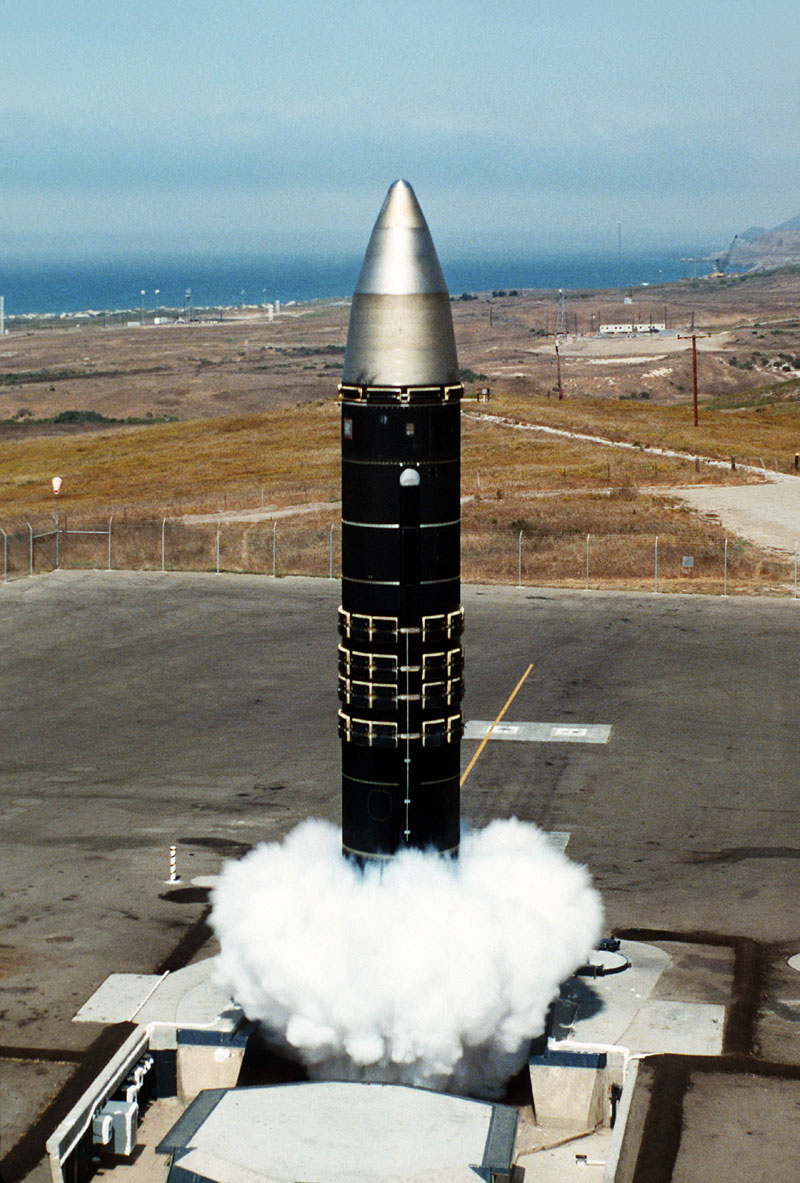LGM-118A Peacekeeper

The Peacekeeper missile is America's newest intercontinental ballistic missile. Its deployment fulfilled a key goal of the strategic modernization program and increased strength and credibility to the ground-based leg of the U.S. strategic triad. The "L" in LGM is the Department of Defense designation for silo-launched; "G" means surface attack; and "M" stands for guided missile.
With the end of the Cold War, the U.S. has begun to revise its strategic policy and has agreed to eliminate the multiple re-entry vehicle Peacekeeper ICBMs by the year 2003 as part of the Strategic Arms Reduction Treaty II.
The Peacekeeper is capable of delivering 10 independently targeted warheads with greater accuracy than any other ballistic missile. It is a three-stage rocket ICBM system consisting of three major sections: the boost system, the post-boost vehicle system and the re-entry system.
General Characteristics
| Primary Function: | Intercontinental ballistic missile |
|---|---|
| Power Plant: | First three stages, solid-propellant; fourth stage, storable liquid (by Thiokol, Aerojet, Hercules and Rocketdyne) |
| Thrust: | First stage, 202,600 pounds (91,170 kilograms) |
| Length: | 71 feet (21.8 meters) |
| Weight: | 195,000 pounds (87,750 kilograms) including re-entry vehicles |
| Diameter: | 7 feet, 8 inches (2.3 meters) |
| Speed: | Approximately 15,000 miles per hour at burnout (Mach 20 at sea level) |
| Range: | Greater than 6,000 miles (5,217 nautical miles) |
| Ceiling: | 700 miles (1,120 kilometers) |
| Guidance systems: | Inertial; integration by Rockwell, IMU by Northrop and Rockwell |
| Warheads: | 10 Avco MK 21 re-entry vehicles |
| Unit Cost: | Approximately $70 million |
| Date Deployed: | December 1986 |
| Inventory: | Active force, 50; ANG, 0; Reserve, 0 |